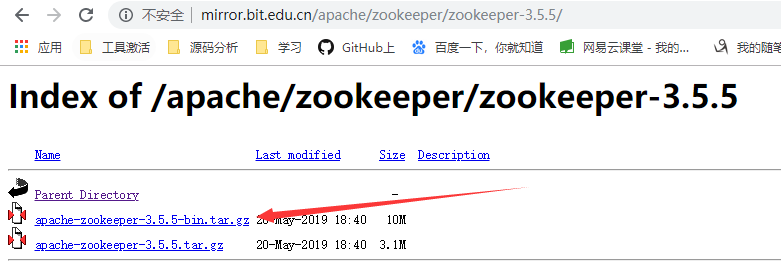Hi everyone,
I have a number of samples that I would like to draw a polygon for each of them to illustrate the shape of the data. My data look likes this:
01 0.31707317
02 0.12195122
03 0.09756098
04 0.07317073
05 0.07317073
06 0.07317073
07 0.07317073
08 0.07317073
09 0.04878049
10 0.04878049
I can easily draw a radar chart using radarchart, which looks like this: 
But I am trying to measure the area of the results shape and use that as a measure of data shape. This is where I struggle.
I tried to save the resulting figure as a vector and use the points there but it looks like I can not pass the chart into a vector. Then I tried rgdal package to exprt my figure as a shapefile and use the coordinates there:
coorddf <- SpatialPointsDataFrame(radarchart(as.data.frame(ttradar), pcol=rgb(0.2,0.5,0.5) , pfcol=rgb(0.2,0.5,0.5, 0.2))
, data = radarchart(as.data.frame(ttradar), pcol=rgb(0.2,0.5,0.5) , cglcol = "white", pfcol=rgb(0.2,0.5,0.5, 0.2))
writeOGR(coorddf, dsn = '.', layer = 'mypoints', driver = "ESRI Shapefile")
Which was not a good idea because my data does not have values that can be used as lat and long points..
Any suggestions?
To expand on @G5W's excellent point:
library(dplyr)
library(ggplot2)
df <- structure(
list(
V1 = 1:10,
V2 = c(
0.31707317,
0.12195122,
0.09756098,
0.07317073,
0.07317073,
0.07317073,
0.07317073,
0.07317073,
0.04878049,
0.04878049
)
),
.Names = c("V1", "V2"),
class = "data.frame",
row.names = c(NA, -10L))
You can calculate each triangle from its neighbor to the right using dplyr::lead:
areas <- df %>%
setNames(c("variable", "value")) %>%
mutate(nextval = lead(value, default = value[1]),
angle = (1/10) * (2*pi),
# change 1/n to number of variables
area = value*nextval*sin(angle)/2)
variable value nextval angle area
1 1 0.31707317 0.12195122 0.6283185 0.0113640813
2 2 0.12195122 0.09756098 0.6283185 0.0034966406
3 3 0.09756098 0.07317073 0.6283185 0.0020979843
4 4 0.07317073 0.07317073 0.6283185 0.0015734881
5 5 0.07317073 0.07317073 0.6283185 0.0015734881
6 6 0.07317073 0.07317073 0.6283185 0.0015734881
7 7 0.07317073 0.07317073 0.6283185 0.0015734881
8 8 0.07317073 0.04878049 0.6283185 0.0010489921
9 9 0.04878049 0.04878049 0.6283185 0.0006993281
10 10 0.04878049 0.31707317 0.6283185 0.0045456327
A couple things: notice that I used the default = value[1] to make sure that the NA that would be caused at the end to wrap around to using the first value instead. Also you need to use angles in radians, so that's just 1/n * 2pi. Now that we have all the triangle areas, we can add them:
areas %>% summarise(total = sum(area))
total
1 0.02954661
This approach is easily extended to multiple groups to compare.
df <- expand.grid(var = 1:8, grp = c("a", "b")) %>%
mutate(value = runif(length(var), 0.25, 1)) %>%
group_by(grp) %>%
mutate(nextval = lead(value, default = value[1]),
angle = (1/8)*(2*pi),
area = value*nextval*sin(angle)/2) %>%
mutate(total = sum(area))
# A tibble: 16 x 7
# Groups: grp [2]
var grp value nextval angle area total
<int> <fctr> <dbl> <dbl> <dbl> <dbl> <dbl>
1 1 a 0.3101167 0.6831233 0.7853982 0.07489956 0.5689067
2 2 a 0.6831233 0.4166692 0.7853982 0.10063417 0.5689067
3 3 a 0.4166692 0.4756976 0.7853982 0.07007730 0.5689067
4 4 a 0.4756976 0.3426595 0.7853982 0.05763002 0.5689067
5 5 a 0.3426595 0.3107870 0.7853982 0.03765135 0.5689067
6 6 a 0.3107870 0.3001208 0.7853982 0.03297721 0.5689067
7 7 a 0.3001208 0.9039894 0.7853982 0.09592115 0.5689067
8 8 a 0.9039894 0.3101167 0.7853982 0.09911594 0.5689067
9 1 b 0.9888119 0.3481213 0.7853982 0.12170243 1.1749789
10 2 b 0.3481213 0.8513316 0.7853982 0.10478143 1.1749789
11 3 b 0.8513316 0.9928401 0.7853982 0.29883611 1.1749789
12 4 b 0.9928401 0.6372992 0.7853982 0.22370605 1.1749789
13 5 b 0.6372992 0.8303906 0.7853982 0.18710303 1.1749789
14 6 b 0.8303906 0.3607232 0.7853982 0.10590379 1.1749789
15 7 b 0.3607232 0.2786354 0.7853982 0.03553575 1.1749789
16 8 b 0.2786354 0.9888119 0.7853982 0.09741033 1.1749789
df %>%
ggplot(aes(var, value)) +
geom_polygon() +
geom_text(aes(0,0, label = round(total, 2)), color = "white") +
facet_grid(~grp) +
scale_y_continuous("", limits = c(0, 1), expand = c(0,0)) +
scale_x_continuous("", breaks = 1:8, expand = c(0,0)) +
theme_minimal() +
coord_radar()

If you're doing a lot of these, it's worth looking at the ggradar package: http://www.ggplot2-exts.org/ggradar.html
Since I was just doing this one-off, I used a polar coordinate modification from Erwan Le Pennec:
http://www.cmap.polytechnique.fr/~lepennec/R/Radar/RadarAndParallelPlots.html
coord_radar <- function (theta = "x", start = 0, direction = 1)
{
theta <- match.arg(theta, c("x", "y"))
r <- if (theta == "x")
"y"
else "x"
ggproto("CoordRadar", CoordPolar, theta = theta, r = r, start = start,
direction = sign(direction),
is_linear = function(coord) TRUE)
}
It is possible to solve for the area of your shape analytically.
The area is made up of a bunch of triangles. For example, the wedge
between V1 & V2 looks like this.

This is a side-angle-side problem so the area is v1*v2*sin(pi/5)/2. The area for the second wedge will be v2*v3*sin(pi/5)/2. Just add up the triangles around the circle.





